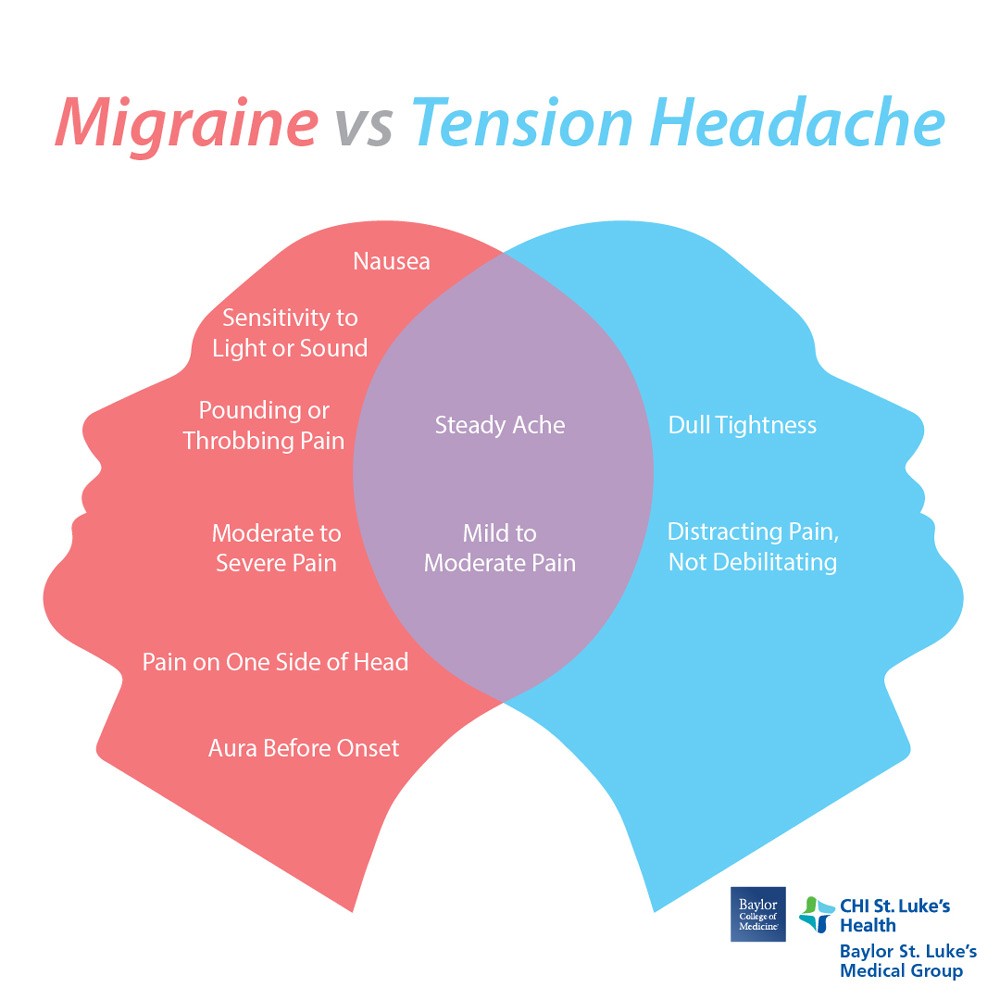St. Luke's Health joins CommonSpirit.org soon! Enjoy a seamless, patient-centered digital experience. Learn more

Dealing with pain or pressure in your head or face? You may be suffering from a headache. When experiencing head pain, tuning into the location and intensity of the pain can help you distinguish what type of headache it is. Knowing whether you have a tension headache or migraine headache will help you choose an appropriate treatment plan for relief.
A tension headache typically feels like a steady ache or discomfort in the head. The pain may be distracting, but not debilitating. On the other hand, a migraine is a severe, throbbing headache. If you have severe head pain and feel light-headed, nauseous, sensitive to light, or experience other visual disturbances, you may be suffering from a migraine.

Who is prone to migraines?
Migraines affect 1 billion people worldwide and disproportionately affect women. Nearly 85 percent of all chronic migraine sufferers are female. Migraine headaches are most common for people between the ages of 25 and 55. If your family has a history of migraines, you may have a genetic predisposition to migraines.
Certain headaches require immediate emergency attention. Call 9-1-1 or visit an emergency room right away if you experience any of the following:
Stiff neck
Fever
Convulsions
Confusion
Shortness of breath
Muscular weakness
Double vision
These symptoms could be a sign of a more serious condition, like meningitis, stroke, temporal arteritis, or a ruptured aneurysm.
If your headache patterns change or feel different, it might be time to visit a doctor. Make an appointment with Baylor St. Luke’s Medical Group to see a neurologist or primary care physician.
Looking for a doctor? Perform a quick search by name or browse by specialty.